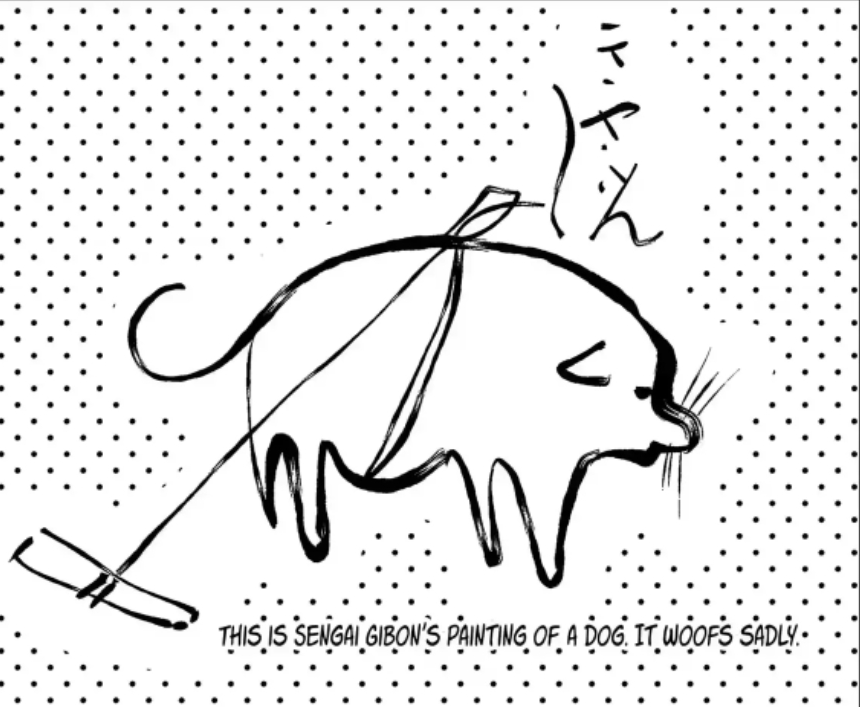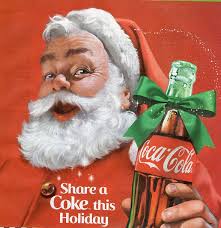The reason not to use pencils in Space wasn’t that Pencil are inflamable, the main reason was the graphit dust produced by Pencils, which because of the lack of gravity, enter floating in the electronic, causing short circuits as main risk.

That is something I found weird, too. Inflammable and flammable mean the same thing!
It makes more sense if you think of it as enflammable. Indent and indebted at examples of this “in-” prefix. https://www.merriam-webster.com/grammar/flammable-or-inflammable
Technically, I think they’re different. Flammable means that it can be lit on fire, like wood or something. Whereas inflammable means it can catch fire on its own, like gas, for example.
Edit: after some googling, it appears that my source was shit and should be disregarded. They do indeed appear to be synonyms. And also, I was thinking of gasoline. I think I was thinking of the “gas pedal” and that threw me off.

Synonyms, true synonyms. No real difference between them (except don’t use inflammable in safety situations, for above reasons)
saying that “gas” is able to catch fire on its own is stretching it :) A gas mix typically still needs a spark, unlike: https://en.wikipedia.org/wiki/Hypergolic_propellant <- that stuff can “catch fire” on its own. But even there - it needs to be mixed, so technically, one component requires the other to ignite.
Yeah, my bad, shit example.
United States education system
Also a broken bit of lead could easily float into someone’s eye or get aspirated.
There is no way either side used lead pencils. Saying lead is in pencils is a very outdated thing, it’s all graphite these days.
it hasn’t been graphite for while now either….

Chalk isn’t chalk?
Regular chalk is calcium carbonate. Crayola’s website says their sidewalk chalk uses calcium sulfate (gypsum as an ingredient in plaster of paris).
So they’re both calcium salts.
A sharp piece of graphite from a broken pencil is not something you would want in your eyes either
Genuine question. why did you choose to use “inflammable” instead of “flammable”?
Lapsus
lapis
Skamtebord
Inflame was the original word for ‘to ignite’ (or flare up). But given English uses the un- and in- prefixes and modifiers, ‘flammable’ has been deemed less confusing, especially if English is not your native language
inflammation, inflamed, inflammable
inflammable = easily ignited
and thin paper shavings = space kindling. the entire argument is fucking dumb.
perhaps the sovs gnawed their pencils sharp and consumed all the graphite fragments and shavings lol. good lil soviet space beavers
If I remember correctly, the Soviet engines were a lot harder to short out, so pencils weren’t as big a problem in their spacecraft.
This is the most upvotes I think I have ever seen on a comment here.
Probably not great for eyes or noses or filtration systems either
Twist: you’re the filtration system.
Besides that, NASA wasn’t the one that funded the research behind the pen, they bought the completed pens. The expenses for the research were funded by Fisher
NASA still foots the bill either way. In this arrangement, the cost of development is simply included in the price of the product plus a fixed profit margin. Such ‘cost-plus’ contracts are criticized because it eliminates competing for efficiency and incentivises contractors to make their solutions as complicated and expensive as possible.
Your points about a cost-plus contract have merit but aren’t applicable here because the pens weren’t developed under a contract at all. Paul Fisher of the Fisher Pen Company had started developing a pressurized pen before the space program even began (to develop a pen that could write in other orientations than on a desk), although learning of the concerns from the program gave him renewed impetus to solve the design. Fisher patented the design in 1966 after ten years of development and about $1 million in cost. Prior to the pens NASA had been purchasing special pencils at $128.89/each. The original purchase order for the pens bought 400 at $2.95/each.

The Soviet space program bought the pens in 1969, and besides the Americans they’re still used today by the Russian and Chinese space programs. You can buy one yourself for as little as $7 if you don’t care about it being refillable. On the one hand that’s a lot for a disposable pen, on the other hand that’s not terribly expensive for a pen that writes upside-down if you need that, and might not feel too bad if you’re prone to losing pens.
so, there are refillable one’s too. okay.
Now this is the calligraphic geekout I came here to see
Can we still buy one of the special space pencils? Were they low-dust or something?
Pens are dust-free as is, the problem with a regular ballpoint or felt tip pen is that both inking mechanisms rely on gravity. When you’re in 0g the ballpoint won’t work at all and the felt will stop working after a point when there’s no gravity to pull more ink to the tip.
You could probably spin a felt until it rewets but you’d be liable to make a mess as well.
Don’t felt tip pens work by capillary action?
You’re just raising the question about why the pencils cost over $100 if all pencils are dust free. What was so special about them when the special pens were so cheap?
Pens are dust-free, pencils are not. Dust-free pencils are special and expensive because it’s a lot of chemistry and testing to ensure that. How do you cleanly sharpen a pencil for example? Special pens are special but cheap because the components to make them are still relatively simple, the ink is still standard. More expensive than standard pens by a fair bit but a lot cheaper and more practical than the pencils.
I misread you as saying pencils are dust free.
Except this wasn’t a cost plus contract, this was NASA buying a thing at discount on the open market. In fact, the USSR paid the same discounted bulk price per pen that NASA did.
I’ve owned a fair few Fisher Space Pens throughout the years. It’s an interesting bit of space memorabilia that’s functional and affordable. It’s an impressive bit of engineering.
As a space nerd, I love the pen. As a pen guy…. There’s better options. The cartridge just doesn’t write as smooth as I like, nor is it a really bold, saturated line. For daily actual writing use, I use a Lamy Safari rollerball or a Pilot B2P.
They’re small, but when you open them up, they’re full-sized. It fits in my knockoff Ridge wallet. I buy blue cartridges because I hate signing stuff in black.
10/10 for me, but it’s all about utility for me.
Rite In The Rain pens are awesome too. Ultralight for backpacking.
Apollo 1 resulted in a lot of improvements regarding fire safety.
People drag the Soviets for being reckless with the lives of their crews, but forget that the USA melted three men in a training exercise.
at least those three were known, acknowledged and not covered in secrecy.
we really have no idea how many the sov’s lost in their rush to stay ahead / catch up to the moon landings. truly, there’s no way to fucking know, even the cosmonauts themselves never knew the total extent.
maybe they both deserve to be dragged a bit eh? pfft
also, fucking pencil shavings?
pencil shavings contain graphite (great for getting into shit and shorting shit out) and thin paper (think, kindling)
did the russians gnaw the fucking things sharp? no? idiots…
Grease pencil, you pull a tab and the things unrolls.
Plus pressurized pens are useful in more than just zero-g. I used to use one along with a waterproof note pad for note taking in the field. They’re also not prohibitively expensive, although the ones from Fisher itself carry a pretty huge brand name markup, other companies sell them for a couple bucks each.
Wait…waterproof notepad?! How does a notepad hold the moisture from the pen? Or is this like a grease marker situation?
idk how it works but it does. I’ve been using Rite in the Rain for years but there are others too if you search it up.
Just guessing here but I imagine the ink doesn’t contain any water, so an otherwise absorbent material that is treated with a hydrophobic coating would probably work for that.
the paper doesnt necessarily need to absorb the ink, the ink just needs to dry on the surface is such a way that it adheres well enough it doesn’t rub off, or stay wet.
So really, you want a high adhesion, quick drying ink, which would basically let you write on any surface it’ll stick to.
NASA used crayons before those space pens, and iirc the pens were available for a while before they tried them
NASA used crayons before those space pens, and iirc the pens were available for a while before they tried them
this is partially correct; the missing pertinent bit - there was a crayon shortage due to the influx of marines recruited for the vietnam war (mmm crayola), forcing NASA to seek alternatives.
Plus, inhaling graphite dust since it doesn’t fall doesn’t sound fun.
Plus, graphite dust and electronics are also not a great combination.
It’s carbon dust, which your body is pretty good at dealing with, and in quantities so trivial you probably already inhale more currently than you would using a pencil in an otherwise mostly sterile spaceship (at least sterile compared to earth)
Have you broken a pencil tip? I wouldn’t want to breath that in after it goes flying.
Hardly anything is less problematic than graphite. No idea why you think that is an issue.
You’re probably thinking “it’s just carbon, nbd”, but that doesn’t mean it’s good for your lungs:
https://www.inchem.org/documents/icsc/icsc/eics0893.htm
“Repeated or prolonged inhalation of dusts may cause effects on the lungs. This may result in graphite pneumoconiosis”
I mean water is toxic if you drink too much. The amount of dust of a pencil is negligible… now graphite from pencil production? Thats more concerning.
“I mean, water is toxic if you drink too much”
Translation: “my argument is lazy and not really well thought out, I’m not going to even acknowledge your point, I’m just gonna double down”
You want a long drawn out answer? Ok then. Simple fact, our world is naturally dirty, just go outside in spring and you’ll breathe in untold amount of pollen everyday. Yet our lungs cope. How? By excreting mocus and its cilia to carry out foreign material out. However, if an excess amount of foreign material overwhlems the protections the lungs offers, then problems occurs. That of course ignores materials that are toxic, radioactive, or carcinogenic. So unless you are using a pencil made from pure carbon-14… its harmless.
If you wanted clarification or a ELI5, next time just ask instead of being passive agressive.
This is inaccurate. Graphite is not flammable. It forms small particles that, mixed with air, could combust in a dust explosion, just like flour.
Wood.
Wood is also combustible. You need a lot of heat to make wood burn. Hold a lighter to your pencil, it will not instantly catch fire, do the same with paper and you need a water bucket nearby.
Sharpen the pencil and create a bunch of tiny shavings then put them in a pure O² environment. They’ll light up real fast.
Tbe Apollo 1 fire spread so quickly because in a pure O² environment fucking velcro was super flammable.
Yeah, try lighting your pencil on fire in a 100% O2 environment. It’s not the pencil being flammable that was dangerous, it was the pure oxygen atmosphere making the pencil extremely flammable to the point where a small spark from static electricity could cause it to almost instantly immolate, that made it dangerous.
I’m probably just being dense but what’s the difference between being flammable and being susceptible to combustion?
In technical safety terms, combustibles are harder to ignite than flammables. So diesel and olive oil are combustibles, for example, because neither of them give off enough ignitable vapour at room temperature. Ethanol does, so it gets classified as flammable, and you need to store and handle it more carefully than diesel. Then there’s really horrible stuff like triethylborane which will catch fire upon meeting oxygen even at temperatures well below the freezing point of water
Of course in casual usage they mean the same thing
You’re not dense for asking a question. Without asking questions, it’s Impossible to learn.
The flash point is different. The flash point is the temperature that is necessary to create enough vapor for the substance to ignite.
Flammable material has a low flash point, which means it catches on fire easily. Think gasoline. Combustibles need a higher initial temperature, but eventually they will burn and sustain the burning until running out. Think wood.
They’re referring to the relationship between surface area and combustion. Talc, for example, melts but does not burn. Talc powder can ignite if blown over an open flame.
My first thought was: “I must try this”. I need to read my house insurance policy first.
Curiosity got the better of me when I waved an alcohol wipe over an open flame. There’s still a dark mark on the office carpet tile from where I had to stamp it out.
It’s a cool pen. “Btw, this pen was the same type of pen used by Astronauts”; I mean, how’s that for a conversation starter 😁
Conversation starter, or an entire episode of Seinfeld
Both? Yes, both, both is good.
deleted by creator
Nope. 100% O2 can’t burn on its own. Other things in 100% O2 on the other hand…
I got big into pens for a bit before settling on my edc one-size-fits-most pen. During my travels, I saw that the Fisher Space pens are still highly regarded as great writers even for us grounded folk. Yeah, there’s better, but for the size and build quality they’re great options. I went with the Ti Arto by Big Idea Design instead. Just so I could use basically any pen cartridges (except cheap bic roller ball).
Huh, the Arto used to be 70usd. I’d say not worth anymore. I got the black one and the paint has already chipped plus the clip is not titanium unless you buy an expensive “premium” clip.
Do they even “write” in space any more? Isn’t it all screens?
americans trying to save the political devision in 2025
Empires wasting resources on nonflammable space pens while the whole planet burns.

















